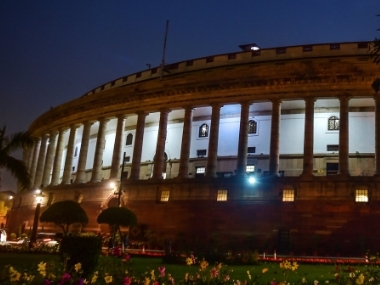If we wish to build a great nation, our system of government must unify people and involve us all in governance. These two ingredients are essential for a large, diverse country but our parliamentary system fails us on both counts. We have a system of majority-rule, designed for top-down administration. India needs a decentralised system that promotes self-governance. This will allow diverse communities to express their cultures, yet feel the spirit of national unity. America’s presidential form of government is just such a decentralised system. It provides local autonomy but brings people together behind a strong Centre. This is so because it was devised from the bottom up — by individual states after they gained independence from Britain in the late 1700s. Familiar with the weaknesses of Britain’s parliamentary government, America’s founding fathers created a better alternative. The presidential system has the same three branches — executive, legislature and judiciary — but unlike our system, they have been structured to be truly separate. The top official of each branch is elected directly by the people while judges are appointed jointly by the executive (president) and the legislature (senators). [caption id=“attachment_6004781” align=“alignleft” width=“380”] File image of Parliament. PTI[/caption] These are not minor differences. They make each branch independent, allowing them to act as a check on the others. When the survival of the executive depends on the legislature, or vice-versa, as in India, checking each other becomes meaningless. State governments in that system are also independent. They cannot be dissolved by the Centre and they create their own local governments. There are nearly 90,000 local government bodies in America — from school districts to ambulance services — all are run by citizens. India’s decision to go for a parliamentary system was really made by Jawaharlal Nehru-led Union Constitution Committee and not the Constituent Assembly. The only rationale given in the assembly was our leaders were “familiar” with the parliamentary system. B R Ambedkar’s argument that the presidential system offered more stable but less accountable governments came after the decision was made as the draft constitution was being adopted. Still, Hussain Imam corrected Ambedkar: “If it is examined, it will be found the committees of the House of Representative and the Senate in USA exercise far greater control than the control exercised by the House of Commons.” Ambedkar had proposed a plan for a United States of India based on non-parliamentary features and Sardar Patel, too, wanted a system wherein the president and governors were directly elected. “If India copies England, it is my firm conviction she will be ruined,” Mahatma Gandhi had said. Even the British cautioned in a 1933 parliamentary committee report that none of the factors essential for parliamentary governments existed in India. There are two common myths about the US system: it can become a dictatorship and it would harm India’s diversity. The truth is just the opposite. It is the Indian system that produces autocrats and causes communal and ethnic fissures. In the 230-year history of the US, no president has acted autocratically. But in just 71 years of our history, we can cite at least two prime ministers who have been terribly autocratic. A single person cannot control the presidential system. A president is not akin to our prime minister. He has no control over state governments. Even at the Centre, he doesn’t control the legislature nor can he make laws or approve budgets. He cannot use the investigative agencies at will. He cannot even pick his cabinet without the legislature’s approval. We have seen this with Donald Trump. His wings were clipped within days of him coming to the office. The recent midterm elections have cut him down to size even further. As for diversity, the last thing a heterogeneous society needs is a system of majority rule. America’s population is even more diverse than ours. It has people of 15 different races, who practice every religion on the planet and speak 350 languages. Their system offers true federalism, giving local communities the autonomy to serve different ethnicities. The presidential system is the best defence against one-man rule. It provides better protection against corruption, because all ministers are directly answerable to the legislature. Every new programme requires the legislature’s approval and can be stopped by the courts. This restricts governments from doling out taxpayers’ money. It eliminates vote-bank politics. Candidates are not chosen by party bosses based on caste or religion. They have to win in large constituencies, through primary elections. It offers a transparent judiciary managed by states. The judiciary is accountable because legislatures control subordinate courts. It’s time to take a clear-eyed look at the presidential system that is designed for a much diverse society. The author is the founder-chairman of the Divya Himachal Group and also the author of Why India Needs the Presidential System
If we wish to build a great nation, our system of government must unify people and involve us all in governance. These two ingredients are essential for a large, diverse country but our parliamentary system fails us on both counts.
Advertisement
End of Article


)

)
)
)
)
)
)
)
)



